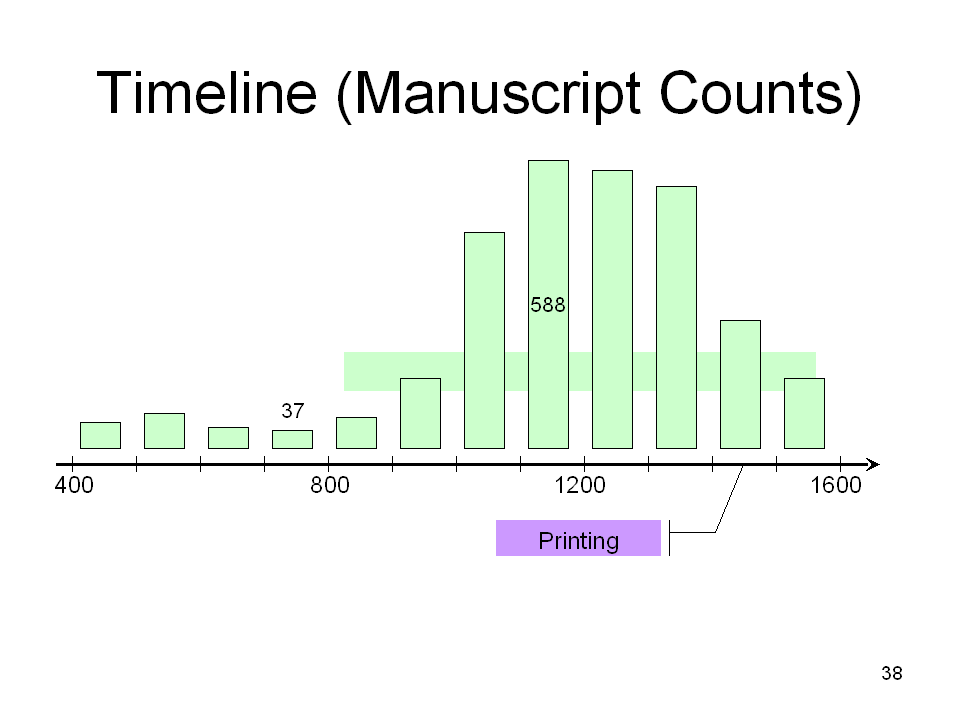
 |
Freethought & Rationalism ArchiveThe archives are read only. |
|
|
#1 |
|
Senior Member
Join Date: Jan 2006
Location: Rockford, IL
Posts: 740
|
This statistic is often presented on apologetics websites and message boards. Does anyone know where it originally came from? What was the methodology behind it?
Thanks! |
|
|
|
|
#2 |
|
Veteran Member
Join Date: Jul 2001
Location: the reliquary of Ockham's razor
Posts: 4,035
|
Seems to me to be as formulaic rather than factual. I doubt any methodology went into it, 99% is simply round-speaking for "almost completely, but with enough room to allow one or two of your examples not to disprove."
What I have seen is the claim that 99% of the New Testament is quoted in another book before the Nicene Council, but even that is not true. It's above 90%, but not 99%, using my own computer search (the e-Catena). |
|
|

|
|
|
#3 |
|
Veteran Member
Join Date: Jul 2003
Location: Colorado
Posts: 8,674
|
What it is supposed to mean, by the way, is that there is less than 1% variance in the texts from all the manuscripts.
But what does that mean? In which manuscripts, which translations? In addition, this is where things get technical. You see, most manuscripts were produced during the "minuscule explosion", from around the 9th century to the 14th century.  There is a great deal of consistency between the minuscule texts, but most of the variation between the texts is among the few early copies prior to the minuscule explosion. So, if you take the total number of manuscripts and look at the variation among all the manuscripts, then there is little variation, because the manuscripts created after the 9th century are very consistent, but if you look at the manuscripts from BEFORE the minuscule explosion, then you see that there is much greater variation, and after all, that's really what counts anyway. It's as if you had four different version of a story, and then one of those variations was chosen to have photo copies made of it. Among the first four copies, 20% of the texts are different from one another. But you make 200 copies of one version, thus you have 201 copies that are all exactly the same, and only 3 other copies that differ from those 201. Now, you see, the texts are "99%" accurate. |
|
|
|
|
#4 |
|
Veteran Member
Join Date: Mar 2005
Location: Florida
Posts: 3,890
|
It's bullshit and they made it up.
|
|
|
|
|
#5 |
|
Regular Member
Join Date: Dec 2006
Location: standing behind you with a fire-poker
Posts: 154
|
|
|
|
|
|
#6 |
|
Veteran Member
Join Date: May 2004
Location: Colorado
Posts: 1,037
|
The thing is, even if its true, all it means is that a lot of people were careful when they made copies. It says nothing about the truth of what the writings were about. It sounds good, especially if you're already a believer, but it really doesn't mean what they use it for.
There are millions of copies of The Lord of the Rings floating around, probably a lot more than 99% identical, but that doesn't prove that Frodo and Gandalf really existed. |
|
|
|
|
#7 |
|
Contributor
Join Date: Mar 2004
Location: Dallas, TX
Posts: 11,525
|
99% of the time, when people use the expression "99% of the time", they are just making crap up.
|
|
|
|
|
#8 |
|
Veteran Member
Join Date: Mar 2007
Location: Texas
Posts: 1,829
|
|
|
|
|
|
#9 | |
|
Banned
Join Date: Apr 2005
Location: Queens, NY
Posts: 2,293
|
Quote:
I couldn't find the exact phrase in a search and figures are often bandied about without clear definition and context. Even simply looking at two manuscripts and comparing .. folks say they are 90% or 95% or 99% in agreement and any one could be "right" (or wrong) depending on methodology. All such statistics should be questioned and reviewed from a methodology perspective and given little credence as a throwaway number. Folks using the 99% figure probably have been confused by modern textual criticism into being unsure of two full NT sections (ending of Mark and the Pericope Adultera) and various other verses and short section variants. Therefore they do not really have a faith, trust and acceptance of whatever version they are using. (Which is a good attitude to have if you are using the modern versions full of alexandrian corruptions.) Thus the 99% wiggle-room claim. And the figure you mention I would never use. Since my Bible is 100% accurate, textually, through the promised Godly imperatives of inspiration and preservation. Shalom, Steven |
|
|
|
|
|
#10 | |
|
Banned
Join Date: Jun 2005
Location: Florida
Posts: 19,796
|
Quote:
|
|
|
|
| Thread Tools | Search this Thread |
|